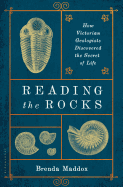
Like most scientific disciplines, geology was founded largely by wealthy gentlemen. But according to Brenda Maddox's fascinating new history, Reading the Rocks: How Victorian Geologists Discovered the Secret of Life, 19th-century women and clergymen changed the field forever with their findings.
Among the highlights is the chapter on Mary Anning, a girl of "low social class and poverty" who made her first discovery in 1811, at the age of 12. She sold her fossils, Maddox writes, to keep her mother "out of the poorhouse." She died at the age of 47 from breast cancer and was subsequently all but forgotten until the 21st century, when the scientific community began to recognize her enormous contributions to the field.
Equally intriguing is the chapter on Reverend William Buckland, remembered as much for his "popular and humorous" lectures and outlandish parties as his scientific discoveries. "Hedgehog and crocodile," writes Maddox "were among the delicacies he fed his guests.... He even claimed to have eaten the heart of King Louis XVI." Each of these outsider scientists, Maddox argues, contributed not only to our understanding of Earth's past, but to the body of knowledge needed to formalize evolutionary theory, which, in the Victorian era, "was still unmentionable in polite scientific society."
The author of five celebrated biographies (including those of Elizabeth Taylor and W.B. Yeats), Maddox brings each scientist to life, in all their failure and glory. Reading the Rocks is an invaluable addition to the literature of the history of science. --Amy Brady, freelance writer and critic

